New technologies for building a house with foam. The outer shape of the foam house: a rectangle and a sphere. What is a foam Japanese house
When choosing a material for building a house, hardly anyone will think about polystyrene foam. Nevertheless domed houses Styrofoam is called “houses of the twenty-first century”, the housing of the future. These energy-saving durable structures can become a reliable and comfortable home for people.
The polystyrene foam dome house has a number of advantages:
- high thermal insulation properties, which saves on heating in winter and cooling in summer;
- they can be erected in different climatic zones, since the foam does not rot, does not rust, does not attract insects;
- they are quickly assembled and disassembled, that is, they can be moved from place to place;
- reliability and durability, such houses can be operated without repair for up to fifty years;
- minimum time for installation at home;
- building work is cheap.
What is the secret of the main advantage of such houses, their energy-saving and heat-insulating properties? The answer to this question lies in the very structure of the dome.
The smaller the surface area, the higher the energy efficiency of indoor climate control. The area of a sphere is four times smaller than the area of a parallelepiped of similar dimensions.
Separately, it should be noted the light features of the domed house. Everyone knows that rectangular rooms absorb light. The spherical surface, on the other hand, contributes to its uniform distribution, which leads to the fact that in domed houses it is much lighter inside than in ordinary houses without additional lighting.
Dome house design
The design of a domed house is based on a geodesic dome. You can build it using the widespread frame technology.
Four main ways to build a dome:
- connector (assembly using pieces of timber);
- quick-connector (assembly from triangular panels);
- connectorless (assembly from precisely measured pieces of timber);
- light geodetic structures (tiled building made of pieces of metal or plastic pipes).

Houses can be with or without a foundation. If you are building a foundation, then a light tape monolithic or wooden one is recommended, since the weight of the dome and the house itself is quite low. Foundations assembled from impregnated wood can be used for up to a hundred years. If you mount a house without a foundation, then it is installed on a wooden platform or piles.
Split frequency
Since the dome is spherical, and building materials are usually rectangular, you need to calculate the shape of your future dome so that it looks like a sphere as much as possible. The degree of approximation of the dome to the sphere is called the frequency of splitting (this comes from the fact that the surface is split into triangular fragments, from which it will be built).
An important step in the construction of houses with a dome is the choice of the frequency of splitting. Two factors govern the calculation of dome frequency: the diameter of the dome, the ability to use standard windows and doors. Most often choose a frequency of 2V or 3V.
Large domes, more than fourteen meters in diameter, are built at a frequency of 3V, smaller ones at a frequency of 2V. It is clear that a dome with a higher frequency will be smoother and, accordingly, will look more aesthetically pleasing, but the number of building elements will be large, which brings additional construction costs.
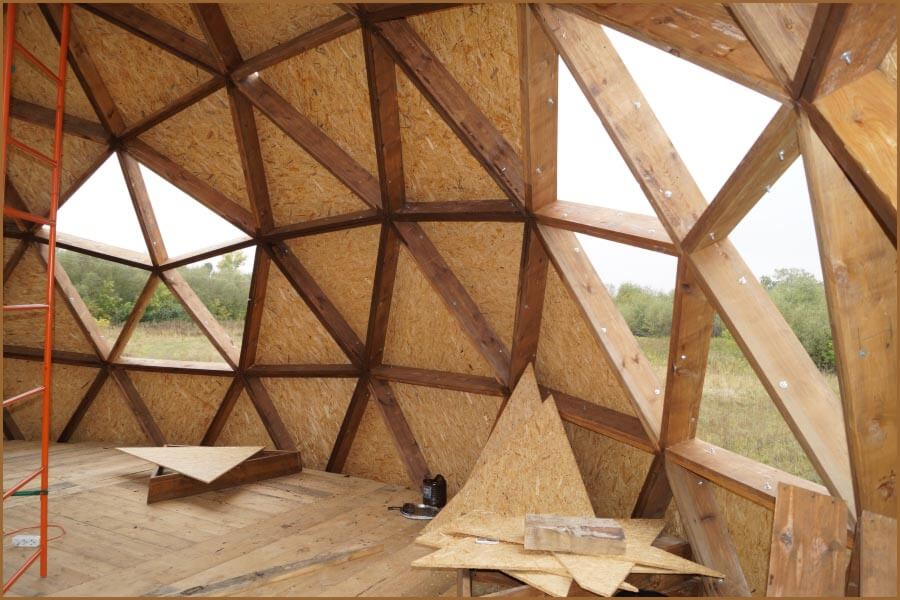
Further features of domed houses
The use of so-called "skirts" is also practiced. The skirt is the vertical walls inside the house, which allow you to create a more familiar vertical position for people, increase the volume of the room and adjust the height of the building. The height of the skirt is from one to two meters. Such a vertical wall can be either a separate component or extend into the dome structure.
The installation of windows and doors when building a house from polystyrene foam with your own hands also has its own characteristics.
It is a great temptation to glaze a large surface of the house, it should be remembered that this is a big minus, since its heat-saving properties will decrease and increase housekeeping costs.
Install rectangular, round and triangular windows. The rectangular shape of the windows is used for skylights, mainly.

The door is mounted in two ways: with the help of an extension of the dressing room or they try to fit it into the dome structure with the calculation of the maximum glazing of the entrance group.
Domed foam houses are also built multi-storey. Unlike square frame buildings, in which all floors are mounted at once, in domed houses the frame itself is erected first, then the roof, and in domed houses, on the contrary, the dome is erected first, and then the second floor.
A significant advantage of domed houses is its natural ventilation. It does not need to install any ventilation, since the windows installed in its upper half and in its base take on the role of ventilation holes. Sometimes a fan is installed under the ceiling of the house.
Air exchange inside domed houses also helps to reduce the cost of heat saving, since the convex surface of the dome allows air to circulate naturally. Externally, the wind goes around with less resistance, while the rectangular building is a flat wind barrier. As a result, there is strong pressure on one side of the house and rarefaction on the other, drafts arise that take away the heat from the batteries, and the air inside is replaced by outdoor air.
Thermal insulation of the house
The next stage of construction is the insulation of the domed house. Everyone chooses a different insulation: mineral wool or polystyrene foam. We are talking about insulation with polystyrene foam.
Expanded polystyrene is one of the best and highest quality insulation in the modern construction industry.

Dome triangles are ready-made cells for laying polystyrene foam. With a longer length of the edges of the triangle in the foam, the so-called “spacers” are made from the inside, which ensure the preservation of density and optimal thermal conductivity.
There is no fire hazard in use in the construction of such houses., because it is treated with substances that do not contribute to combustion. Naturally, the relevant safety regulations must also be observed.
In all cases of using expanded polystyrene, the requirements of GOST 15588-86 should be taken into account. Boards of this material must not come into contact with interior spaces. This is easily ensured on the floors - with a concrete screed, on the walls - with adhesive mixtures or other finishing materials. Second important requirement- this is that the temperature of the surfaces should not exceed eighty degrees.
In professional construction, all norms are observed, so that the negative about the use of polystyrene foam comes only from ignorant people.
Dome houses made of polystyrene have reliable stability. So, in 1994 in Taiwan, such a house withstood a cyclone, the wind speed of which reached two hundred and forty kilometers per hour.
Recently, more and more often you can hear talk about the so-called thermal house. It may seem like a made-up term from some science fiction novel, but the reality is much simpler. A thermal house is a house built from polystyrene foam. This building technology is also called fixed formwork.


This article will discuss how to buildDIY foam house.


These blocks are hollow boxes. Their dimensions are standard (95x25x25 cm), but for construction internal walls products of a slightly smaller width are used - 95x13x25 cm.
Note! Expanded polystyrene blocks are produced using the technology of industrial conveyor production. During a work shift, the production line produces about one hundred and twenty blocks.


The advantages of building materials include:
- ease of processing and installation;
- resistance to permanent moisture;
- light weight;
- excellent soundproofing characteristics;
- high-quality thermal insulation due to the multilayer structure;
- resistance to decay and fungus.
It is also worth noting that the foam refers to "breathable" materials, that is, to those that allow air to pass through.


But there are also disadvantages that must be taken into account even before construction begins.
- Styrofoam blocks cannot withstand temperatures above 90ᵒС.
- The strength of the foam is just an illusion, in fact, it can easily be pierced with a finger. In this regard, the walls will have to be puttied.
- The material is highly flammable.
The cost of one such block is approximately 300 rubles, which is relatively inexpensive. Consider the cost of building a polystyrene foam house in comparison with a brick one. So, a thermal house is a structure that is already ready for final finishing, which can be covered with both plaster or paint, and siding. At the same time, a brick house needs putty and thermal insulation (with the same foam), which, of course, increases construction costs.
In a word, a thermal house is an inexpensive pleasure, because it already includes both finishing and insulation. Moreover, according to GOST, the height of such a house can reach 15 m, which is equivalent to 5-6 floors.
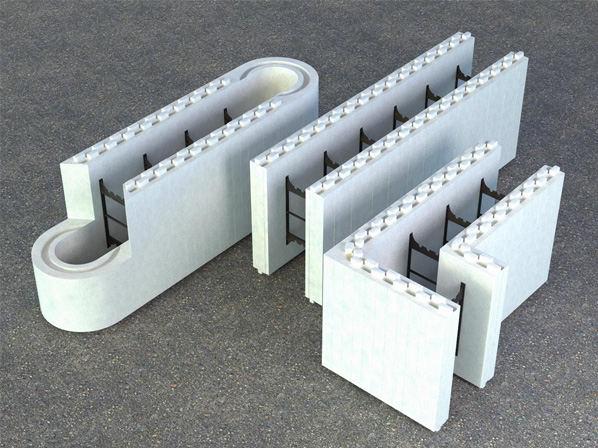

About the environmental friendliness of the material
Most people are sure that polystyrene, like any other "chemistry", is unsafe or even harmful to health. So far, this fact has not been confirmed, but not refuted either. It should be noted that there are a number of requirements, in particular sanitary and GOST, which the manufactured products fully comply with.
But some people are difficult to convince even of obvious things, which is most likely due to a psychological factor. And even the fact that polystyrene is widely used in insulation and interior decoration, as well as in the manufacture of disposable tableware, for some reason is not a weighty argument in this case.
Foam house: building instructions
Having dealt with the strengths and weaknesses of the material, you can proceed with the installation. But first you need to prepare everything you need.
Stage 1. Tools, materials
The work will require:
- foam blocks;
- finishing material;
- sand;
- wires, pipes;
- metal fittings ø12 mm;
- steel wire for bonding;
- cement of the "six hundredth" brand;
- water;
- crushed stone;
- concrete mixer.
Stage 2. Foundation


Building a house starts with the foundation. The best option is ordinary strip foundation, although it all depends on the characteristics of the soil in the selected region.
After pouring, the base is supplemented with a support. To do this, wooden bars measuring 50x60 mm are laid around the entire perimeter of the foundation. The entire remaining area must be laid with boards of the same thickness.
Note! After laying, the tree is treated with flame retardant and antiseptic.
Stage 3. Assembly of the structure
The erection of a thermal house is similar to the assembly of a designer - the blocks are joined groove to groove, shifted with reinforcement and assembled into walls.


Step 1. The foam blocks are prepared for installation: they are cleaned, leveled and dried thoroughly.


Step 3 A concrete solution is being prepared. To do this, cement, crushed stone and sand are poured into a concrete mixer in a ratio of 1: 3: 3 and poured with such an amount of water that a liquid mixture is obtained as a result.
Step 4. After driving five rows, a solution is poured into the voids between the layers of blocks. When pouring, it is advisable to tap on the side surface of each block - so the shrinkage of the concrete will be more dense.


Step 5. A part of the wall is assembled from the next five rows of blocks and again filled with mortar. The procedure is repeated until the completion of construction.
Step 6 Sewerage, wiring and other communications are laid directly into the walls of the house, after which it is covered with a roof and the final finishing of the walls is carried out. It is characteristic that the pipeline is recommended to be laid in still hollow walls, while the electrical wiring is supplied through pre-made strobes (there should be no problems with strobe foam).


There are also no restrictions in the choice of roofing material. In fact, a foam house is a monolithic structure that can withstand any load, so even natural tiles can be used for coating.
Note! It is better to start building a thermal house in the warm season at a temperature not lower than -10ᵒС.
Foam blocks retain their original properties for a long time. There is even an opinion that a house built from these blocks, under appropriate conditions, can last up to 100 years.
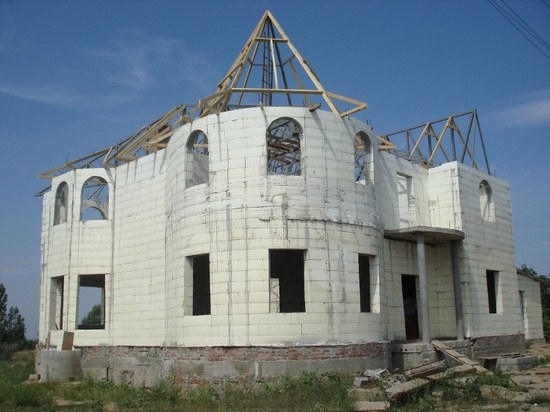

Stage 4. Finishing
As already mentioned, there are practically no restrictions on the internal / external decoration of the walls of a thermal house. In financial terms, it is more profitable to use decorative plaster or ordinary paint, and from the inside to make plasterboard lining.


The thermal house may look different. Below is an instruction for the construction of an arched building of standard sizes: the height of the walls is 3 m, the total area is about 10 m². Of course, such a structure cannot be used as permanent housing.


What will be required in the work
Before starting construction, you need to take care of everything you need. Below is a list of materials:
- foam blocks;
- building level;
- concrete mortar;
- mounting foam;
- knife;
- dowels, self-tapping screws;
- ruler;
- marker.
Construction technology
Step 1. First, the foundation is being built. In this case, there are no differences from the previous version.
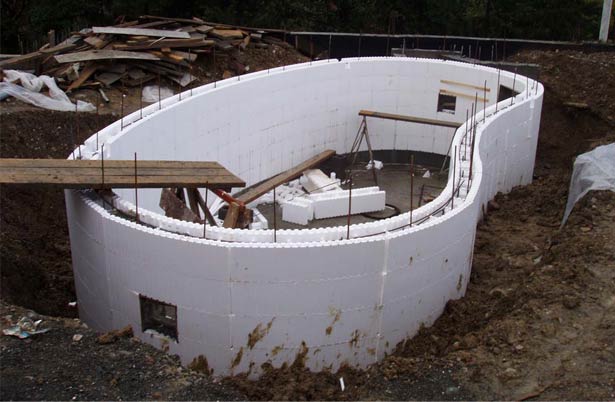

Step 2. A beam of 50x60 mm is laid along the entire perimeter of the base, fastening is done by means of anchors. In this case, the design is periodically checked by the level.
Note! To optimize the fastening, you can use any mounting foam, except for the extra class. This is explained simply: this type of foam expands greatly.
Step 3. The side walls of the base, protruding above the ground, are trimmed with decorative stone. The stone is laid on an ordinary concrete mortar and lightly beaten with a hammer.
Step 4. The foundation is covered with a waterproofing layer (plastic film is suitable). A brick can be placed on top of the film to increase the strength of the foundation and protect against subsidence.
Step 5. Next, the foam blocks are prepared. They are cut and glued in accordance with the previously taken measurements. For the frame of the arch, you need to use only curly blocks, and you can take ordinary thick sheets to fill the walls. Mounting foam is used for gluing.
Note! For fixing, you can also use special glue for polystyrene, but mounting foam is spent more economically. The only drawback of the foam is that its expansion must be constantly monitored, otherwise the tightness of the frame may be compromised.
Step 6 Finished foam arches are attached to the base with self-tapping screws and dowels. To do this, holes are made around the entire perimeter of the foundation (with equal pitch), into which high self-tapping screws are installed. Then, holes are made in the lower part of each arch in the appropriate places, after which the arches are mounted on self-tapping screws.


Note! For ease of assembly, dowels can be inserted into the holes in the arches in advance.
Step 7 Arches are additionally fixed. If mounting foam is used, then it fills the gap between the frame and the base with a thin tube. If glue is used, then all work surfaces are lubricated with it even before the arches are mounted.
Step 8. It remains only to close the cracks between the blocks with concrete mortar and plaster the walls of the house. For further finishing, as already mentioned, you can use any material - it all depends on financial capabilities and personal preferences.
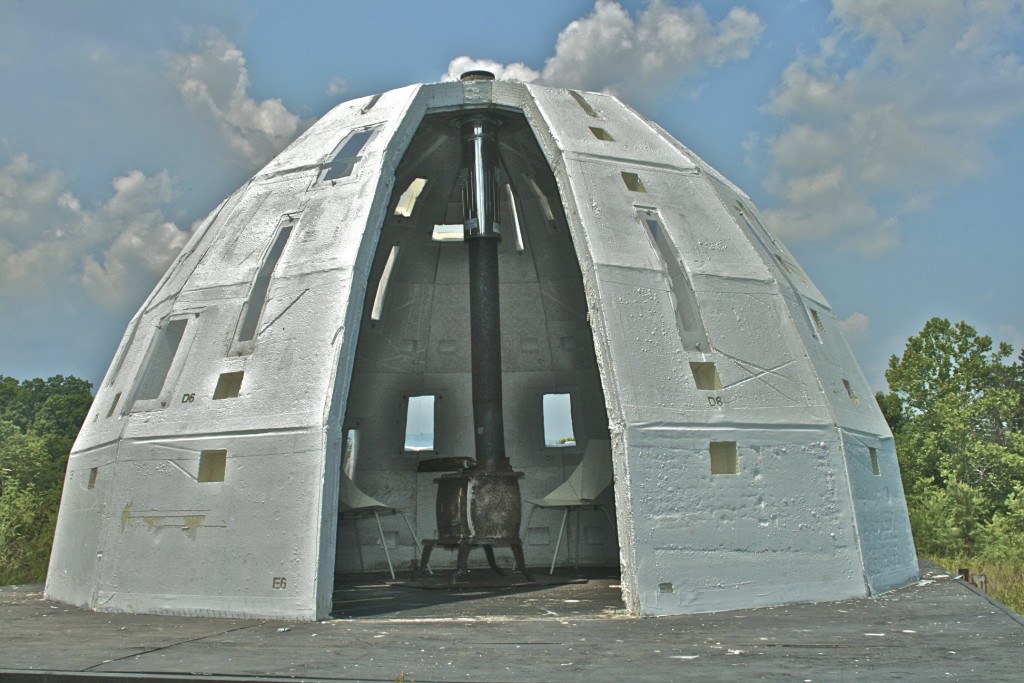

As you can see, building a foam house is not such a complicated procedure. The main thing is to correctly calculate the consumption of building materials and securely fix the blocks on the foundation. By the way, not only blocks can be used in construction.


Styrofoam dome house
Finally. Perforated polystyrene panels
For fixed formwork, you can use not only foam blocks, but also large perforated panels, which are interconnected by a reinforcement frame. The panels are attached to the reinforcement with mushroom nuts at the perforation points (such nuts are made from high pressure polyethylene).
The size of each panel is on average 100x300 cm. The gap between the outer and internal slabs(5 cm thick each) it is 15 cm, which is quite enough to build a house with two or three floors. Products are delivered to the construction site piece by piece or ready-made.


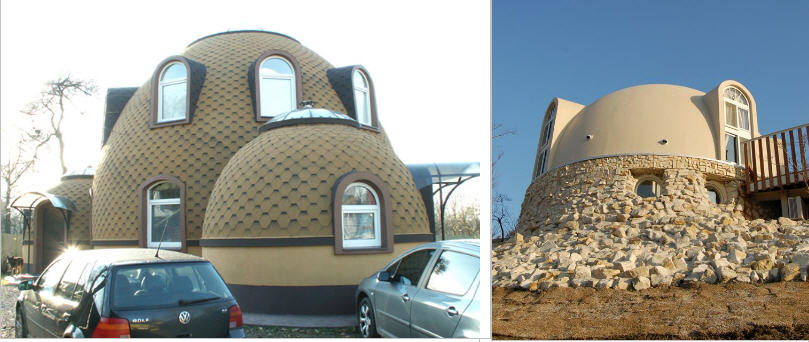

Video - Building a house from foam blocks
A modern house should be not only attractive and durable, but also economical and energy-saving. Therefore, recently, non-traditional methods of construction from materials that have not been used before have become increasingly popular. One of the relative novelties in construction are the so-called thermal houses, the walls of which are built from foam blocks poured with concrete.
Scheme of insulation of a polystyrene foam facade.
Today, in order to build a warm and high-quality house, not only building materials such as brick, concrete or wood are used, but also polystyrene blocks poured with a conventional concrete mortar. Styrofoam, or expanded polystyrene, for a long time was not considered as a full-fledged building material, but recently such structures have been used more and more often.
How to build such a house? The technology itself is not very complicated, although certain skills and time are required for construction. Foam walls are built using the following materials:
- Styrofoam blocks, which have thick walls, are hollow inside. Blocks are produced only in an industrial way.
- A mortar made of concrete, with the help of which the cavities of the blocks are poured.
- Wooden formwork for blocks.
- Metal reinforcing bars that act as reinforcement when pouring wall blocks.
The construction process itself is as follows:

The scheme of fastening the foam to the wall.
- First you need to set the foundation. In this case, you can also use a tape, but since the house is poured from concrete, it is better to immediately calculate all the loads.
- After that, the laying of wall blocks begins, around which wooden formwork is installed. It is necessary to prevent deformation of the foam during pouring.
- Concrete is poured carefully, it is necessary to check that the blocks do not move, do not deform during work.
Thermal house features
Why does a Styrofoam house stand out so much from the rest? The fact is that blocks of foam, or polystyrene, act as formwork-insulation, which reduces heat loss. But it’s not enough just to order a foam house, you need to plan it correctly. All windows of the house should be oriented to the south, at the entrance it is recommended to arrange the so-called buffer zones. For houses that are built from blocks poured with concrete, you can not save on doors and windows.
Of the features of such foam buildings, it should be noted that they require the installation of a ventilation system and heating, that is, in the winter months, such a house must be warmed up, although energy consumption will be minimal.
People who put up such a warm house, but neglected the rules for its installation (not so complicated), often complain about dampness and fungus that has appeared on the walls. But this is a consequence of the violation of technology, and not the shortcomings of the material. Styrofoam and concrete walls are vapor-tight, so a system should be installed to maintain a comfortable atmosphere inside forced ventilation. The best option is air handling units with recuperation.
Finish options
The construction of foam houses is distinguished by its own characteristics, but from the advantages over others it should be noted that the walls in this case can be covered with almost any type of finishing materials.
facade external walls, as a rule, are processed with a layer of decorative plaster, which is characterized by low cost and attractive appearance, but other options are possible.
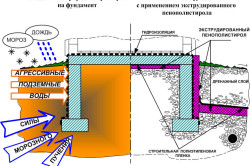
Scheme of thermal insulation of the foundation with polystyrene foam.
For example, ventilated facade systems can be used, which are not only attractive and give the building a modern, stylish look, but also provide an optimal microclimate in the house.
Internal walls can be finished with a variety of materials. Today, most often they are sheathed with drywall, which provides many design options.
There are no restrictions for roofing materials of foam houses. Due to the fact that concrete mortar is poured inside the blocks, the house turns out to be virtually monolithic, capable of withstanding even heavy loads. That is, even natural ceramic tiles, which are very heavy, can be laid on the roof surface.
In order not to spoil the interior decoration of the foam house, all engineering communications can be laid directly in the walls of the house, but this must be done even at the construction stage. The only difficulty is the use of only those materials that are acceptable for indoor installation.
Cons of construction
A lot has been said about the advantages and benefits of thermal houses, but is polystyrene as a frame good enough? And is it possible to avoid some of the disadvantages of such houses made of concrete and foam? Consider the main difficulties and disadvantages that may arise during the construction and operation of such a structure.

Styrofoam wall diagram.
- Operational problems. Such a disadvantage is associated with the material itself - foam. To fix shelves or cabinets on its surface, it is necessary even during the construction itself to arrange special linings that are fixed directly to concrete. If this is not done, then when repairing or installing new furniture, you will have to cut a layer of foam to concrete, and then attach wooden blocks to it, on which cabinets will already be hung. As you can see, this problem is solvable, although there is a certain inconvenience here, since additional, not the easiest work is required.
- Heat capacity. Despite the fact that foam houses are considered very warm, they still require winter time good warm-up.
- One of the main disadvantages of using concrete and foam plastic as a building material for walls is that the walls are vapor-tight. According to the owners of such houses, the atmosphere in them is constantly a little humid, which creates discomfort and not the most pleasant microclimate. This problem can be solved, so that it is not classified as critical, but this requires some effort and expense. You can make the microclimate in the house more comfortable by installing a forced ventilation system. And given that such ventilation systems today they are installed not only for foam houses, but also for many other buildings, such a drawback often goes unnoticed.
- Labor intensity. The construction of such a house requires certain efforts and skills. In this case, blocks poured with concrete are not just installed, it is necessary to put them correctly, in strict accordance with all the requirements for technology. But it cannot be said that it is more difficult to install foam plastic blocks than to build a house, for example, from brick. In many cases, it is even easier to set up such a house, although you will have to sweat when laying the first rows. Efforts and skills are required for the exterior and interior decoration of the foam wall, as it may be difficult to mount it. Therefore, it is necessary to use only special materials.
Many consider the disadvantages that the blocks are made of foam. Not everyone prefers this material as the main one for building the walls of a house, but this is a rather controversial issue. The harm of polystyrene has not been proven, during operation it does not emit toxic substances, but it cannot be called natural either.
It is also necessary to note such a point: today the number of houses built from polystyrene foam and concrete is not so large, that is, it is too early to talk about their advantages or obvious disadvantages over all the others. These houses are stable and very comfortable, they are distinguished by their attractive cost and the ability to take various forms, but more than one more year is still required for a more complete analysis of their operation.
Building Requirements
A foam house today is one of the options for a fairly quick and inexpensive construction of housing. Such a design can take any, often very unexpected, but such attractive forms, which greatly distinguishes a thermal house from a traditional brick or wooden one. But if you have chosen just such a material, that is, foam blocks poured with concrete, you need to remember some features.

Scheme of the expanded polystyrene panel.
- transport, unloading and installation of blocks must be careful, as the foam can be damaged at the ends, where the edges can chip off. This problem can be solved by simply gluing the material, but this takes time, which makes installation longer;
- when buying, you should choose the right blocks, as unscrupulous manufacturers can allow marriage. All corners must be even, the dimensions must match the declared ones;
- when concrete is poured into blocks, not only the installation of formwork is required, but also a constant check of verticality using the building level. This is necessary, since the foam expands during pouring, that is, the blocks can move, but this should not be allowed;
- after the installation of house structures is completed, you must immediately proceed to outdoor decoration so that the foam has as little contact with direct sunlight as possible.
Today, for the construction of houses, not only traditional materials are used, such as brick, wood, concrete and others, but also unusual at first glance, but no less high-quality and reliable. It's about about foam blocks, the cavities of which are filled with concrete mixture inside. After hardening, the house takes on attractive forms, it is durable, holds heat well, and it is comfortable to live in it.
A styrofoam house is far from a figurative expression, as many beginners think. There are building technologies that are really based on the use of foam as a wall material. I will talk about these technologies and introduce you to their advantages and disadvantages.
So, at present there are three technologies that can be called the construction of polystyrene foam (expanded polystyrene):
Technology 1: frame construction
Technology features
Frame construction is far from new technology. However, in our country it has become widespread only in the last two decades.
The essence of this technology is the construction of the frame of the house from a wooden beam. In this case, the space of the frame is filled with foam. Outside, such walls are sheathed OSB boards, and from the inside with drywall, clapboard or other finishing material.
Thus, the foam in this case performs the function of a wall filler, which is responsible for wall insulation and sound insulation.
Advantages and disadvantages
We will not go into the details of the frame construction technology itself, since it has already been repeatedly mentioned on the pages of our portal. Therefore, further I will only talk about what are the pros and cons of insulation. frame house foam.
Advantages:
- Efficiency. Due to the low thermal conductivity of the foam in middle lane For Russia, the thickness of the insulation layer is 150-200 mm. At the same time, housing will turn out to be warm and energy-saving;
- Thrift. Styrofoam is one of the cheapest materials that can only be used in frame construction;
- Environmental friendliness. This material is hypoallergenic and does not cause irritation upon contact with the skin, unlike mineral heaters. Therefore, it is comfortable to work with him;
- Form stability. Styrofoam does not shrink, which eliminates the appearance of cold bridges in the walls;
- Durability. Subject to the insulation technology, the material will last more than 50 years.
Flaws:
- Zero vapor permeability. For this reason, the walls from the inside need a hermetic vapor barrier. IN otherwise all moisture will accumulate in the joints between the wooden parts of the frame and polystyrene foam, which will lead to rotting of the frame.
Hydro-vapor barrier, in turn, turns housing into a sealed "thermos". Therefore, such buildings need high-quality ventilation;
- Fire hazard. Foam manufacturers very rarely add flame retardants to its composition. As a result, the material burns well, and at the same time emits dangerous toxic substances.
Styrofoam absorbs moisture, so hermetic waterproofing of walls is required not only from the inside, but also from the outside.
For these reasons, polystyrene foam is rarely used to insulate a frame-type house. Most often, mineral wool is used.
I must say that instead of foam, you can also use foam in frame house. This material is an improved version of foam.
Penoplex is more effective in terms of thermal insulation, as well as more durable and durable. In addition, flame retardants are usually contained in the foam, which makes it a low-combustible material.
The disadvantage of penoplex is its low vapor permeability. In addition, the price of foam plastic is 2-3 times higher than that of foam plastic.
Technology 2: construction of domed houses
Technology features
Unlike frame houses, domed houses are made entirely of foam. Moreover, even the roof, if it can be called a roof at all, is made of foam. The fact is that the walls of such buildings have an arched shape, i.e. smoothly into the roof.
For the construction of domed houses, ready-made parts are used, which have recently been manufactured by various companies. The material for them is a dense foam brand PSB-S-50. As a result, the house is assembled as a constructor.
I must say that the first such house was built in Alaska back in 1984. However, interest in such construction in our country has arisen only in recent years.
To make it clear to you what this construction technology is, then we will briefly consider the procedure for erecting a domed house:
| Illustrations | Description of works |
 | Foundation arrangement. Manufacturers claim that a foam house does not need a foundation at all. However, a quality foundation never hurts. |
 | Construction assembly. Blocks are assembled as a constructor. They are connected to each other according to the thorn-groove principle. The joints of the blocks must be coated with glue-foam. It is not advisable to use polyurethane foam, as it expands greatly. |
 | Finishing. This procedure is performed according to the standard scheme for foam plastic:
|
 | decorative trim:
|
You can decorate a domed house not only decorative plaster but also other materials. For example, you can use decorative rock and flexible tiles.
The size of such a house can be from 6 to 12 meters in diameter.
Advantages and disadvantages
Advantages:
- Cheapness. This method of construction is one of the most budgetary;
- Speed. You can build houses from polystyrene foam and finish it in a week, without taking into account the construction of the foundation;
- Seismic resistance. As tests have shown, the dome structure is not afraid of any earthquakes;
- Easy assembly. Every beginner can build a house with his own hands.
- Minimum costs for heating. Due to the low thermal conductivity of the material, such houses are very "warm" and energy-saving;
- The possibility of expanding the area. Extensions can be added as needed.
Flaws:
- Suitable for temporary residence only. Styrofoam houses can only be considered as temporary housing;
- Low strength. Styrofoam walls, even reinforced ones, are not able to fully protect housing from intruders.
The foam house can be used in agriculture, for example, as a vegetable store, hangar, greenhouse, etc.
Technology 3: construction using foam formwork
Technology features
The essence of this technology lies in the fact that hollow foam blocks are used for the construction of walls. Reinforcement is installed in the space inside the blocks and concrete is poured. Blocks have standard sizes 950x250x250 mm.
Thus, at the construction stage, the foam performs the function of formwork, and after the walls are erected, it serves as a heater.
The construction of a house using this technology is carried out as follows:
| Illustrations | Description |
 |
Pouring concrete:
According to this scheme, the walls are erected to the required height. Then the roof is mounted and finishing is carried out. |
Advantages and disadvantages
Advantages:
- Strength. Construction using fixed foam formwork allows you to get a full-fledged monolithic housing that can withstand any load;
- Durability. A house built in this way can last more than 100 years;
- Simplicity and speed of construction. When compared with conventional formwork, the blocks are installed much easier and faster;
- thermal insulation qualities. Unlike the usual monolithic structure, the walls of the house built using this technology do not need to be insulated.
Flaws. The disadvantage of such a construction lies in its high cost. The blocks alone cost about 1,000 rubles per square meter.
Conclusion
We have considered all the possible options for building a foam house with their advantages and disadvantages, which will surely help you make the right choice. Additionally, watch more videos in this article. If you have any questions, leave them in the comments, and I will be happy to help you » width="640" height="360" frameborder="0" allowfullscreen="allowfullscreen">
Conclusion
We have considered all the possible options for building a foam house with their advantages and disadvantages, which will surely help you make the right choice. Additionally, watch more videos in this article. If any points have raised questions in you, leave them in the comments, and I will be happy to answer you.
- Styrofoam characteristics: what you can count on
- Styrofoam house: wall structure
- Styrofoam house: frame construction and fixed formwork
- The outer shape of the foam house: rectangle and sphere
- How to build a round styrofoam house
- Round house made of fixed formwork
- House-sphere from a welding device
Styrofoam represents a modern construction material groups of heaters and insulators. The group of foam (polystyrene foam) heaters includes extruded and ordinary polystyrene, penofol, polyurethane foam (PPU). Foamed plastics are used to insulate finished solid walls, frame structures and for the construction of building surfaces (as a fixed formwork for pouring concrete). As a result of the application of these technologies, a foam plastic structure is obtained. How to make a styrofoam house? What is the technological sequence of its assembly? What materials are used in construction besides expanded polystyrene?
Styrofoam is a modern building insulation and insulator.
Styrofoam characteristics: what you can count on
Polyfoam (expanded polystyrene) is the most widely used insulation of buildings and communications. It has its advantages over other types of materials. The shortcomings characteristic of polystyrene must be taken into account during the construction process.
Thermal insulation is the main advantage of all polystyrenes.

Being foamed, they contain air bubbles enclosed in cells of the base material. With open cells (connected to each other), the material is vapor-permeable (this is ordinary foam). If the cells of the structure are closed (each separately holds its own air bubble), then the material is moisture- and vapor-tight (this is extruded polystyrene, called foam).
The quality of thermal insulation is ensured by the bubble structure, while the maximum insulating ability belongs to penofol, it is slightly lower for penoplex, and even slightly lower for polystyrene. That is, for warming the same one, 6-8 cm of material thickness will be required (for frost -5ºC), 5-6 cm of foam will be enough, and 3-4 cm of foam will be enough.
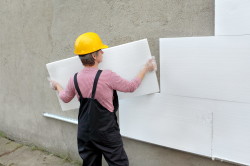
The foam sheet is mounted by one person.
Light weight ensures easy installation. Insulation slabs or elements of fixed formwork are installed in place by one person.
If the material is moisture and vapor impermeable, the question arises of mandatory forced ventilation of the living space. The house requires the cost of arranging the hood, its operation. There may be a background hum during the constant operation of the exhaust system.
Back to index
Styrofoam house: wall structure

Styrofoam wall decoration scheme.
The foam wall will be either a frame support or a fixed formwork with concrete poured inside, reinforcement and two layers of plaster (external and internal). Additional protection of external plaster with siding, block house, facing brick. Interior decoration can be made not only in the form of plaster (ordinary, embossed, decorative). The wall from the inside can be pasted over with drywall (for paint or wallpaper), closed with clapboard or covered with plaster with paint.
The construction industry produces ready-made foam elements for building walls, the so-called sandwich panels. The panel is a finished building element in which the foam is protected on both sides by sheets of OSB, chipboard or metal.
With all types of construction of foam walls, the house is built on a foundation foundation. The size of the foundation, the thickness of its walls is much less than during construction brick walls. Often it is enough to build a shallow strip base, on top of which walls will be assembled or cast.
Back to index
Styrofoam house: frame construction and fixed formwork
IN wireframe technology construction resembles the assembly of ready-made elements of the designer. When pouring the foundation, vertical bearing supports are installed. After the foundation has hardened, horizontal beams are attached between the supports - the so-called upper and lower frame trim. On top of the vertical racks, supported by the upper trim (a number of horizontal bars connecting the racks from above), logs are installed for attaching the roof. When the wooden frame is fully assembled (on self-tapping screws and metal corners), foam plates are mounted between its supports. Next, the walls of the foam house are plastered from the outside, sheathed with panels, the roof is laid, and the window openings are glazed. The last operation is the interior decoration.

Scheme of non-removable foam formwork.
The construction of a foam house using a fixed foam formwork is carried out using a different technology. Here, the role of the frame for concrete will be assigned to hollow blocks of foam and the reinforcement located inside them. Before pouring the foundation, reinforcing elements are vertically installed in it. After hardening, formwork blocks are installed, they are strung on vertical reinforcement so that the metal supports pass through the hollow space inside the block.
Block elements are fastened together mounting foam or special glue for foam.
Concrete is poured into the formwork in one working day. Preliminary installation of formwork can take several days. This technology significantly speeds up construction and reduces the cost of the house in the final cost.
Back to index
The outer shape of the foam house: rectangle and sphere
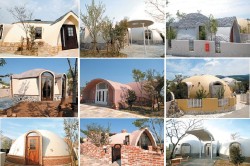
In modern urban planning, the house is traditionally designed in a rectangular shape. The usual division of space into squares and right angles allows you to conveniently arrange furniture. In addition, the assembly of even walls is technologically simple and affordable, does not require additional calculations, deep building knowledge and great skills to perform this work. However, rectangular buildings have a number of disadvantages, which are actively talked about by supporters of an environmentally friendly building.
The available right angles are (in fact) poorly ventilated spaces. The spread of the fungus occurs precisely in the corners of the room and at their intersections. The main source of the fungus is the upper corners of the outer walls with insufficient insulation or improper installation of the insulation. The absence of corners allows you to remove places of poor ventilation.
In the last decade, hexagonal and round designs of residential buildings have appeared and began to spread. Spherical structures have their advantages.
- Mathematical calculations show that the sphere is characterized by the best ratio internal volume to the surface of the walls: the internal space is larger, the external walls are smaller.
- The spherical house is wind-resistant due to its external shape: it is flowed around by winds.
- In a round structure, the load on the walls is successfully distributed: evenly and over the entire surface. This explains the increased seismic resistance of the structure and the high-quality maintenance of snow loads.
A round house-sphere may contain so-called tent elements (parts of a building protruding from the sphere). They are used to decorate doorways and windows.
